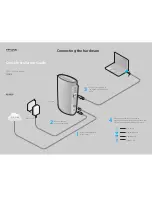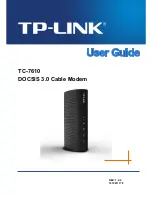
3.
Select a time period (for example, 0 - 1 hour ago).
4.
Click
Get Statistics
.
The System Control Center displays the statistics you requested.
Note:
Most of the displayed statistical information is very technical and requires
interpretation by a trained technician.
Weather and signal strength
Rain or snow can interfere with signal strength. If the interference is strong enough, the router
may stop receiving signals from the satellite and stop transmitting. If this happens, the Transmit
and Receive LEDs both turn off.
Antenna reception may be degraded by heavy rain or snow or by a buildup of moisture, snow,
or ice on the antenna. Similar conditions at the NOC can interfere with signals for brief periods
of time. Signal strength is restored when rain or snow subsides.
In weather conditions such as these, wait to see if normal operation resumes when the weather
returns to normal.
Checking the power supply
Use only the power supply that was enclosed with the satellite router when it was shipped from
the factory.
• Always use the power supply provided with the satellite router. The router’s performance
may suffer if the wrong power supply is used.
• Connect the AC/DC power supply to a three-wire, grounded outlet with an input of 110/240
VAC. A suitable surge protector is recommended to protect the satellite router from possible
damage due to power surges.
• Observe the power standards and requirements of the country where it is installed.
If the LEDs do not function properly as described in this chapter, check the label on the power
supply and verify that you have the correct power supply.
For an AC/DC power supply, the Hughes part number on the power supply should be one of the
following:
• 1500089-0001
• 1500185-0001
If the power supply is DC/DC, the Hughes part number should be:
• 1033554-0001
If your power supply has any other part number, contact your service provider.
51
HN9400 Satellite Router User Guide
1038555-0001 Revision B
Chapter 4
Troubleshooting
















































